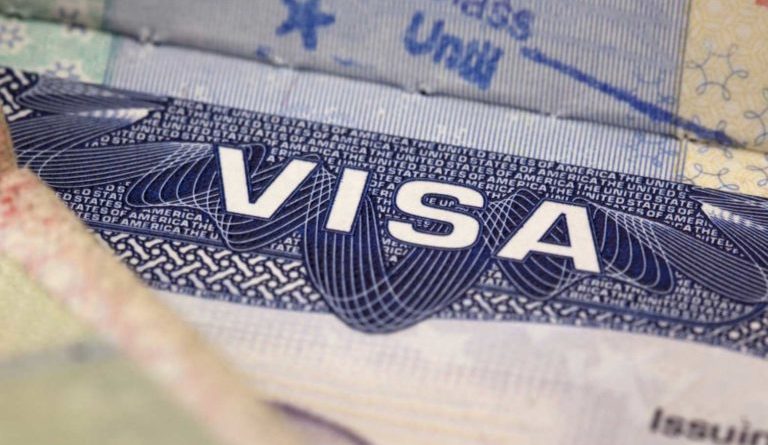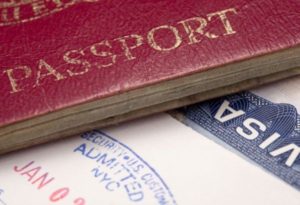OPINION: VISA AUSTRALIA-CANADA | Visa merry-go-round
WATCHING the round of invitations for permanent residency in Australia and Canada in the last four years reminds me of the wooden horses or other animals impaled on a circular platform while mechanical or recorded music plays.
To kids and young adults, the carousel is fun.
But even to them, there is a limit to how many times one can endure the whirligig without getting nauseous and then deciding to get down to check out the other rides in the migration dream park.
The amusement carousel goes round and round, with riders getting off almost at the same spot they got on.
In the migration dream park, particularly in the Australian and Canadian sections, those who got entrance tickets for a chance to be among the first to experience the exhilaration of the ride leave the exit with permanent rewards.
Canada’s visa carousel for permanent residency — the Express Entry — offers rounds that produce winners twice or more a week in various programs: Federal Skilled Worker (FSWP), Federal Skilled Trades (FSTP), Canadian Experience Class (CEC) and the Provincial Nomination Program (PNP).
In 2021, despite the travel restrictions throughout most of 2020 and 2021 due to the Covid-19 pandemic, which delayed the processing of applications from skilled workers overseas, Immigration, Refugees, Citizenship Canada (IRCC) invited 114,431 Express Entry applicants.
The migration dream park was temporarily closed during the pandemic years, enjoyed only by those who were able to get a ticket to ride before the locks and chains were installed.
During this lull — from September 2021 to July 202 — invitations to PNP nominees and CEC applicants were issued mostly to those who are already in Canada as temporary workers or international students.
For that year, IRCC issued only “46,539 invitations in 2022, a 59 percent decrease from the 114,431 invitations issued in 2021.”
Then, two years after the post-pandemic surge in invitations for permanent residency followed.
The migration dream park has reopened.
From June to October 2023, Canada increased the number of horses in the visa carousel: five priority occupational categories for Express Entry were added: health care, STEM, transport, trades, agriculture/agri-food, plus the French-language proficiency category.
From December 2022 to June 2023, 58,748 Express Entry invitations were issued.
And last year, Marc Miller, Canada’s immigration minister, announced the country’s 2023-2025 immigration levels plan with the permanent resident admission targets shown in the table.
Australian sector of the dream park
Covid-19 also caused the Australian section to restrict admissions during and immediately after the pandemic.
Overall migration program applications, including the Skilled Stream, “dropped by 9.3 percent from 174,170 in 2019-20 to 157,989 in 2020-21.”
The next year, however, the Department of Home Affairs (DHA) announced “an uplift in activity from 160,000 to 195,000 places after Australia’s international border restrictions were lifted … to ease workforce and skill shortages and support economic recovery from Covid-19.”
Reflecting the move by Canada to redistribute migrants’ destinations away from the major urban centers, the Australian government focused “primarily in the regional and state and territory nominated categories of the skill stream … provided additional funding of $36.1 million as well as recruitment of 593 additional staff to support temporary and permanent visa delivery.”

Not surprisingly, the DHA reported that for the program year 2022-2023, Australia experienced “the largest permanent skilled migration program in the country’s history: https://www.homeaffairs.gov.au/research-and-stats/files/report-migration-program-2022-23.pdf.
The skill stream outcome was 142,344 places and, within the skill stream:
– The employer-sponsored category had an outcome of 35,000 places. Employer-sponsored visas comprised 24.6 percent of the skill stream outcome in 2022–2023.
– The skilled independent category had an outcome of 32,100 places; the regional category had 33,944 (26,707 places were delivered; 7,004 places in skilled employer-sponsored regional; and 233 places in skilled regional.
– The state/territory nominated category had an outcome of 31,000 places.
– Bringing up the rear were the business innovation and investment program (BIIP), with 5,000 places; the global talent independent, 5,000 places; and the distinguished talent category, 300.

While the New Zealand and United Kingdom sections of the migration dream park also reopened after the pandemic lull, it is the United States that posted the highest number of immigrants admitted despite Covid-19 and the presidential bans on the entry of immigrants to the US.
In 2022, the Department of Homeland Security reported that the US admitted a total of 1,018,349 immigrants, granting lawful permanent resident status to applicants in the family-sponsorship categories: 428,268 to immediate relatives of US citizens (spouse, minor child, parent) and 166,041 to family-preference categories.
The employment-based categories — skilled workers included — were allocated 270,284 visas, 26.5 percent of total immigrants. Yet, this number still surpassed the 142,344 visas Australia issued under the skilled stream, although Canada plans to issue 281,135 in the economic stream, which includes skilled workers.
Meanwhile, the migration dream park faces new challenges.
The November presidential elections echo a renewed call to prevent immigrants from entering the US as “the real number is 15.16 million people entering the US are poisoning the blood of our country,” former president and presumptive Republican Party nominee Donald Trump told a rally in New Hampshire.

In that Dec. 18, 2023, campaign rally, Trump reiterated what immigrants “have done.”
“They poison mental institutions and prisons all over the world, not just in South America, not just to three or four countries that we think about, but all over the world. They’re coming into our country from Africa, from Asia, all over the world.”
Even Canada has virtually retracted its multi-year immigration level plan after immigrants — especially international students — were blamed for the housing crisis.
And Down Under, noting that although Australia’s successive governments” had imposed caps on permanent migration — currently 195,000 — “the temporary migrant cohort has been demand driven and has doubled in size since 2007 and now stands at 1.8 million people.”
This continuous surge led Peter Dutton, the opposition leader, to warn on April 26, 2023, about the “biggest surge in the history of our population [that] … will put even more pressure on transport, on classrooms, on hospitals and on other services.”
The UK and New Zealand sections of the migration dream park also announced restrictions on academic migrants. Starting January 1 this year, most international students in the UK can no longer bring family members to the UK.

New Zealand has increased the funds requirement for students from NZ$15,000 to NZ$20,000, and under the new six-point migration system, an international student must pursue a doctorate to get the maximum 6 points to qualify for residency.
Otherwise, the student with lesser academic qualification must have a job or job offer in New Zealand that is at 1.5 times the median wage (currently NZ $44.49 an hour) or more.
More confusing spins in the merry-go-round at the migration dream park await.

@[email protected]











